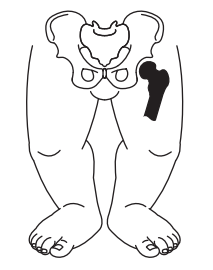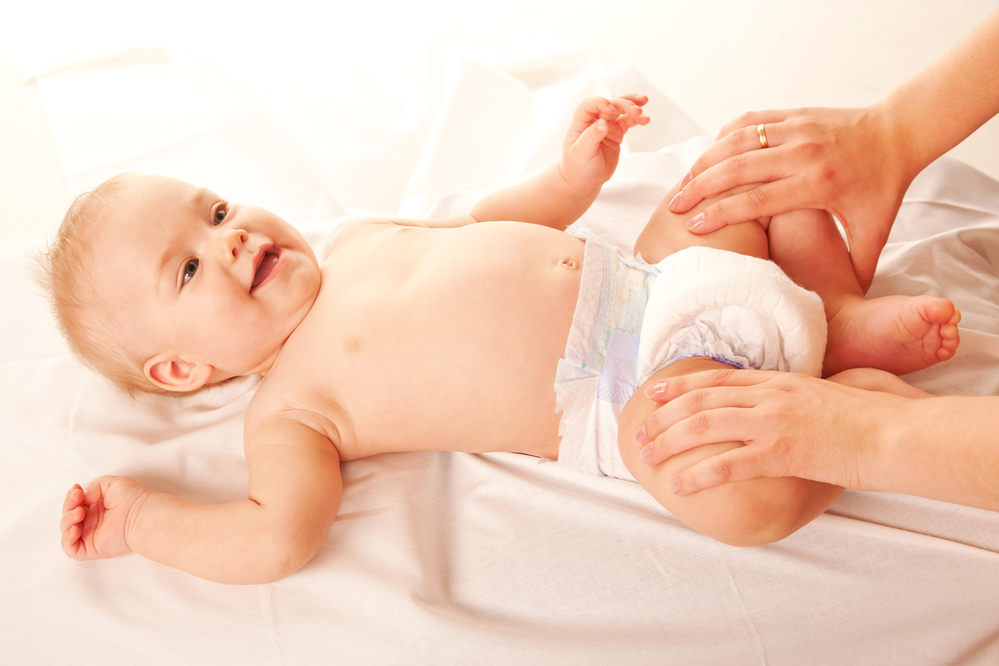A midwife or doctor will give your baby a full physical examination soon after birth, they will do a thorough examination of the hips to make sure that they are not stiff to examine, do not fully dislocate or click, that the legs appear to be of equal length and check for symmetry of any skin folds on the buttocks and thighs.
Don’t be alarmed this is to check for a condition known as Developmental Dysplasia of the Hip (DDH). While this may sound concerning these babies have good outcomes with early treatment. Some hip instability occurs in 1 out of 6 newborns and 2-3 out of every 1,000 infants will require treatment.
DDH is a condition where the hip joint does not develop correctly, and the femur can be unstable and move partially or even fully dislocate out of the ball and socket joint in the hip. This joint needs to be strong and stable for future physical activity for years to come.

Source: Victorian Paediatric Orthopaedic Network (VPON)
Risk factors include:
- Family history in first degree relative (parent or sibling)
- Multiple pregnancy
- First born
- Female
- Breech presentation
- Torticollis (tight neck muscle, uneven neck/head posture)
- Plagiocephaly (misshapen, flat or uneven head shape)
- Foot deformity (such as talipes)
Sometimes the signs are very subtle and can be missed, so by examining regularly at child health nurse visits and GP visits there is more chance of picking this up. In the past it was thought that babies were born with this condition, but we now know that it can develop over the first few weeks or months of life. Because of this, health professionals will routinely continue to assess your baby’s hips.
Diagnosis is confirmed by hip ultrasound if less than 6 months of age and x-ray if over 6 months of age. Some parents worry about radiation from the x-ray however the small amount of exposure to radiation is outweighed by the need for a stable hip joint.
If diagnosed early, babies will often need to wear an abduction brace which holds their legs far apart, this allows the socket joint to deepen and become more stable. In young babies the brace is often worn for around 12 weeks. The condition itself is not painful and the brace and leg/hip position is not either, although baby’s do have to get used to it, as do parents with nappy changing, dressing and bathing as they often need to wear the brace 24 hours a day to begin with.
Babies with DDH will continue to be monitored for some years in the future to ensure the hip joint remains stable and develops well.
If this condition is not diagnosed it can lead to surgery, complications and later hip pain and osteoarthritis. This is why we examine as often as we can.
Preventing DDH:
- Safe wrapping: Babies do feel more secure if swaddled or wrapped in the early months, but we know that tight wrapping around the hips and legs can cause hip dysplasia or dislocation. It is important to allow your baby’s legs to fall out into the ‘froggy’ position as they do naturally when wrapping for sleep and to give them plenty of room to move their legs around. You can wrap them a little more tightly around the chest and shoulders to contain them securely.
- Baby carriers and slings: Look for those that have a wide base and position legs apart, avoid those that bring your baby’s legs together.
- Avoid baby jumpers and walkers as they often have narrow seats and allow the baby’s legs to hang putting increased forces through the hip joint.
Report any clicking felt when caring for your baby to your health professional as a more thorough examination can be completed.
Remember you are your baby’s expert and if you are concerned always let your health professional know, we can work together.
You may also like to read:









